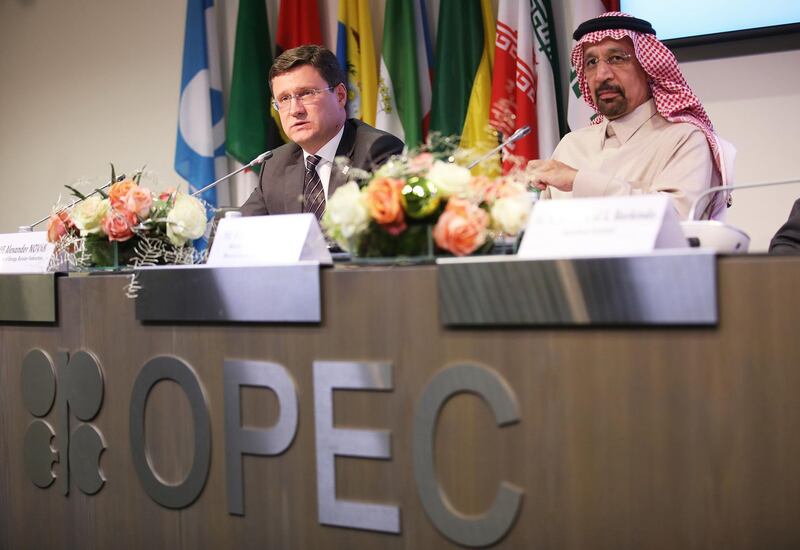Russia can live with lower crude prices, unlike many of its OPEC allies. A flexible exchange rate, low debt and sizable foreign reserves are powerful economic defenses protecting Moscow from oil market fluctuations. The disparity makes agreeing a new output pact complicated.
Economic policymakers gathered at the St Petersburg International Economic Forum last week poured praise on Russia. It’s easy to see why. The World Bank forecasts growth of 1.7 per cent this year, which is below the global average, but it doesn’t tell the whole story.
Christine Lagarde, chief of the International Monetary Fund (IMF), led the chorus of economic approval. “Russia has put in place an admirable macroeconomic framework—saving for a rainy day, letting the exchange rate float, introducing inflation targeting, and shoring up the banking system,” she said.
Few of its partners in the 24-country petro-dollar pact to shore up prices enjoy such lavish commendations from the world’s economic elite. The disparate grouping, which controls 45 per cent of the world’s crude output, gathered around the OPEC negotiating table is an economically unequal club.
On one side, there are wealthy nations such as the Gulf’s Arab states joined by Russia, on other sit the laggards such as war torn Libya and Iraq, or impoverished Venezuela and isolated Iran. All of which makes targeting a “one size fits all” oil price, affordable for consumers and acceptable for producers tricky to achieve.
___________
Read more:
[ Saudi minister sees ‘likely’ oil supply boost in second half of 2018 ]
[ Russia eyes an exit, while Saudi Arabia holds oil output curbs together ]
[ Exclusive: Plans in the works for super group of oil producing countries ]
___________
However, for Russia the “sweet spot” price looks considerably lower than almost all its partners in the alliance with Opec. President Vladimir Putin said in St Petersburg the world’s biggest producer is comfortable with the oil price at around $60 per barrel but can cope with much lower. The Kremlin has based its budget plans for the next three years on a conservative price estimate of $40 per barrel, which is considerably lower than most of its crude producing partners.
Iraq – OPEC’s second-largest producer – has based its budget projections on a slightly higher target price of $46 per barrel and exports of 3.8 million b/d. But Saudi Arabia – still the world’s largest exporter after shouldering the biggest share of cuts – requires higher prices to help fund reforms. According to the IMF, the kingdom needs prices above $85 per barrel this year to balance its books.
The Kremlin’s decision in 2014 to let the rouble float helped to insulate its economy from plummeting oil prices, which bottomed out in 2016.
“Growing oil prices make the rouble appreciate, which lowers the risks of economy overheating; whereas, falling oil prices weaken the rouble, thereby supporting domestic producers through expanding exports and stimulating import substitution,” The Central Bank of the Russian Federation explains on its website.
Russia is also less dependent on oil than other producers. With a total population exceeding 140 million, the nation is vast in every sense. A third of its labor force works in the industrial sector and a stroll down the buzzing Nevsky Prospekt high street in St Petersburg gives the impression of booming services and tourism sectors. For example, hosting this summer’s FIFA World Cup is expected to deliver a $31 billion economic windfall by 2023.
Russia is also a truly global superpower in terms of a wide range of commodities production. From aluminum, gold, grains and natural gas, Moscow is a major supplier of resources for the global economy. Its recent development of liquefied natural gas (LNG) facilities at Yamal shows the scale of its energy ambitions. The plan is to eventually boost LNG production in the Arctic area to 55 million mt/year by 2030.
Russia has also avoided raiding its nest egg. The country has amassed $380 billion of foreign exchange reserves and just over $80bn of gold despite volatile oil prices, according to the central bank’s data. Although other producers have recharged their coffers, some have had to tap their reserves after prices crashed in 2014.
To appease worried consumer nations, Opec and its partners will now consider easing back on their 1.8 million b/d of combined cuts which were scheduled to last until the end of the year. Russia and Saudi Arabia have the clout to persuade the 22 other nations in their oil pact to agree to new quotas regardless of their unequal economic circumstances by the time they meet in Vienna late next month.
Paul Hickin is associate director for oil and Andy Critchlow is head of energy news, Emea at S&P Global Platts






